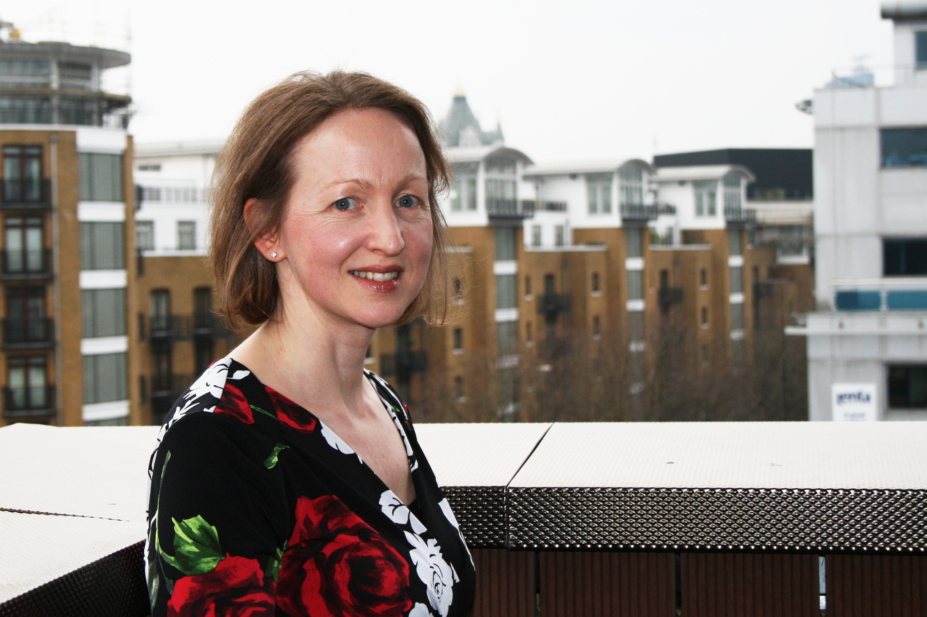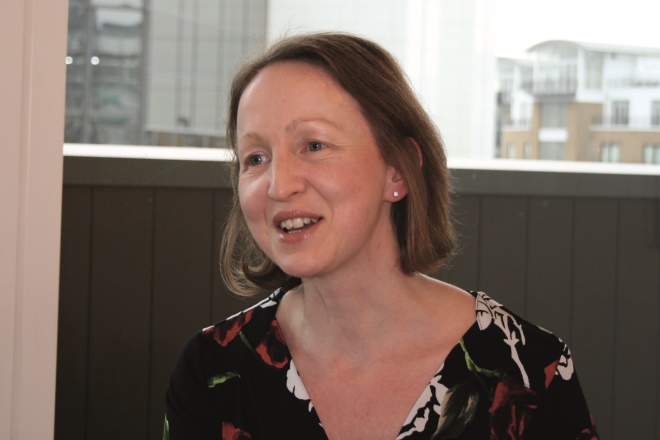
MAG / The Pharmaceutical Journal
A constant drive to get more from her career has enabled Lisa Jamieson to become not only a jack of all trades, but a master of some of them as well.
Although she started in community pharmacy, Jamieson’s varied career and desire to be a generalist means she now splits her time between a research collaboration with a world-leading expert and being self-employed, carrying out consultancy work at the interface between the pharmaceutical industry and the NHS.
But how does a community pharmacist end up making the leap into research? Jamieson’s story is quite unique.
A varied career
Jamieson registered as a pharmacist in 1995, and spent the first four years of her career working as a community pharmacist in Surrey, initially for a large multiple and then as a self-employed locum. A few years into the role, she returned to university to complete a clinical diploma, but emerged from the University of Bradford with a Master’s (MSc) degree in clinical pharmacy instead.
Jamieson had her first taste of research while studying the management of patients with hypertension in a general practice setting — a project which, she says, “grew arms and legs”.
“It was enormous and when I finished, my tutor said it was like a PhD, but for the sample size, with the amount of work I’d done.”
Jamieson’s study ended up being chosen for the press release for the British Pharmaceutical Conference in 2004, where it was also published as a poster.
During her MSc, Jamieson took on one of the first practice-based primary care pharmacist roles in the country, in what was then the West Surrey Health Authority.
That was in the 1990s — just as the structure of the NHS started to change and practice-based primary care roles were being introduced. After around five years, Jamieson took on the role of lead primary care pharmacist in the South West Surrey area of Surrey Primary Care Trust (PCT), in which she managed a team of six primary care pharmacists. However, five years on from that, in 2010, she decided she was once again ready for a new challenge.
“I took a sideways move into clinical commissioning in the PCT”, she explains.
“I did a spell in planned care service redesign as an innovation manager. I used all of my pharmacy knowledge and skills, but in service redesign.”
After three years in this role and with PCTs on the verge of being disbanded, Jamieson decided it was time to go. She took redundancy before entering self-employment to undertake consultancy work — work she continues to do part-time.
However, before leaving the NHS, a lifetime interest in cooking and nutrition drew Jamieson back to university in 2011 to complete another MSc — this time in nutritional medicine at the University of Surrey.
“I’ve always been interested in prevention, holistic care and lifestyle, and I’ve always had an interest in nutrition for managing health in general, but I thought I needed to take it somewhere a little bit more formal instead of just a hobby,” she says.
The MSc that Jamieson chose was specifically aimed at doctors, pharmacists and dietitians, and required a level of knowledge of physiology, pharmacology and basic, degree-level science.
Unfortunately, in April 2014 and in the final stages of her course, Jamieson fell seriously ill.
An unplanned interlude
From the age of four, Jamieson had suffered with various, seemingly unconnected symptoms — migraine, irritable bowel syndrome, dyspepsia, knee dislocations, musculoskeletal pain, and headaches — all had been diagnosed and managed separately without realising the symptoms were linked.
In 2014, Jamieson’s health deteriorated when she developed a spontaneous cerebrospinal fluid leak, which left her bedbound or reclined in a chair, even after the leak had healed naturally.
As a result, Jamieson had a lot of time to research her symptoms. Drawing on her pharmacy knowledge, her interest in nutrition and the 36 years of symptoms she had experienced, Jamieson diagnosed herself with a multi-systemic connective tissue disorder called Ehlers-Danlos syndrome (EDS) — specifically the hypermobile form of the condition.
“All the literature said that it was a genetic disorder, but on my course I had been learning all about environmental triggers — people kept using the phrase ‘genes load the gun; environment pulls the trigger’ — and so I wondered if there was an environmental trigger for my condition.”
Jamieson started to research what nutrients were important for connective tissue synthesis and experimented with dietary changes.
“Vitamin C is a really important nutrient for collagen synthesis and is needed in wound healing, so that was an underlying part of what I did with my diet,” she explains.
Through a systematic approach of removing some foods from her diet and adding some in, over a period of three to six months, Jamieson’s symptoms were either significantly reduced or had subsided altogether; something Jamieson would not have thought possible if she had not done it herself.

Source: MAG / The Pharmaceutical Journal
Lisa Jamieson believes diet plays an important role in managing symptoms of Ehlers-Danlos syndrome
Re-entering the world of research
As well as renewing Jamieson’s energy for life, the diagnosis and dietary changes renewed her passion for research, and with the encouragement of an MSc tutor, she decided to pursue a research project around her newly diagnosed EDS.
“I didn’t know anyone who worked in the field, I didn’t know where I was going to start — I just started to write to various people.”
With a lot of what Jamieson describes as “gentle persistence”, she got in contact with Qasim Aziz, a professor of neurogastroenterology and director of the Wingate Institute of Neurogastroenterology, Queen Mary University of London, and asked if she could do some research with him to finish off her MSc. This then turned into a collaboration, and together, they put together a research proposal and were awarded a grant to work together.
As a research fellow in Aziz’s team, Jamieson has carried out a service review of the neurogastroenterology clinic evaluating the healthcare use patterns of patients with hypermobile EDS.
The team looked at GP and outpatient appointments, A&E and inpatient attendances, patient medications, and ages of symptom onset and diagnosis. Jamieson was able to draw on knowledge from all areas of her varied career — from commissioning to medicines expertise, and the information gathered has shed some light on this somewhat under-recognised syndrome.
On average, there is a 12-year gap between symptom onset and diagnosis, due to the lack of knowledge of the condition.
“We also found that people with EDS, nearly 100% of whom are female, take huge numbers of prescription medicines and nutrient supplements,” explains Jamieson.
The next step for the collaboration is to test the diet Jamieson created for herself to see if it is reproducible in other people.
“If our research can demonstrate that diet can really help, then you’ve got a really simple lifestyle measure that’s really going to help deprescribing and helping people manage their health in a better way.”
A wealth of opportunity
Jamieson describes her experiences with Aziz as “totally life changing”.
“By chance, the man I’m working with is a world leading expert, so he and his team have done all of the seminal research in gastrointestinal problems — I’ve learned so much from working with him.”
Others are now learning from Jamieson herself as she is frequently asked to give talks at conferences such as EDS UK, where she shared her experience of EDS and her research. She has also spoken about nutrition and the impact of poor nutrition on disease at the Clinical Pharmacy Congress and the Pharmacy Show.
“I’ve given lectures to dietetics students because the University of Surrey asked me to talk to them about medicines and how they react with dietetics,” she says. “It’s been a bit random how it’s all come about!”
However, Jamieson says that awareness of EDS is still “absolutely dire” among all healthcare professionals: “If you are not qualified or you are not interested, there’s no way you are going to know about it,” she says.
This is in part due to EDS previously being described as a rare disease, when in fact, it may be a lot more common than originally thought.
“Virtually every time I have a conversation with somebody they tell me that either they themselves or someone they know sounds like they are also affected. If it was rare, that wouldn’t happen,” says Jamieson.
Jamieson is currently working with EDS UK and the Royal College of General Practitioners on a ‘Clinical Spotlight Toolkit’ to help train GPs on what EDS is, how to diagnose and manage patients in primary care, and which patients may need referral to secondary or tertiary care.
Individuals experiencing symptoms of EDS may also present to their community pharmacies, with pharmacists playing an important part in the referral process.
As a huge pharmacy advocate, Jamieson encourages pharmacists to jump right into research. Pharmacists are diligent, conscientious, and brilliant at analysis — all the skills needed. “I think if you have an interest in a particular subject, just approach people, whoever they are, wherever they are based.”
Jamieson says specialists in their field live and breathe their topic of interest and would be delighted to hear from somebody equally as interested. “Everybody always wants to grow their capacity to do more research, so an extra pair of hands is always welcome.”
Jamieson adds that it is important for people to pursue their passion, to wherever it may take them, and her story proves that it is never too late to change direction and try something new.
You may also be interested in
The importance of diverse clinical imagery within health education

Government should consider ways to prevent ‘inappropriate overseas prescribing’ of hormone drugs, review recommends
